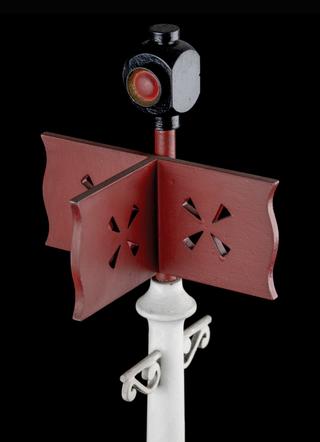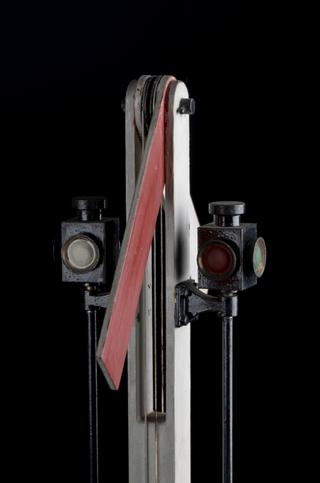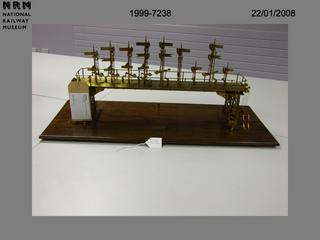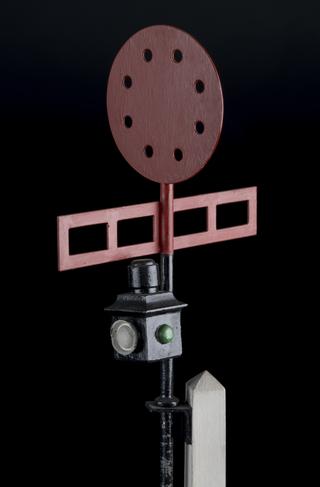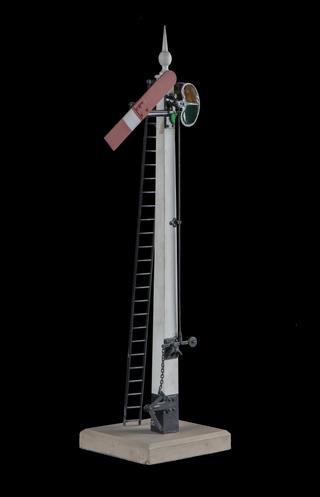
Model of Martin's Revolving Disc Signal
- Made:
- c.1912
Model signal, scale 1:16, London & Southampton Railway, Martin's Revolving Disc signal, c.1839, made c.1912.
Albinus Martin’s signal design ensured no ambiguity as to which line the signal applied to. At its most basic, it applied to a single line only and comprised a red half-disc of canvas or iron sheet – the other half being an open rim – mounted on a post. The red half-disc denoted 'stop' when seen on the left-hand side while travelling along the line for which it applied. When the whole disc was turned edge-on to the running line, the line ahead was 'clear'.
This model depicts Martin's 'station signal', a variation that controlled the more complex track layouts of railway stations. It could protect shunting movements as the red half-disc indicated whether one or both lines were 'blocked' and that the train needed to stop. To indicate that both lines were 'blocked', the red half-disc was turned to the top, a pulley being used for this purpose. A third variation was a junction signal, which was placed next to the main line signal and applied to the branch line joining the main line. The junction signal was identified by an addtional green disc with a black centre. For all signals, oil lamps conveyed the information at night.
Born in Somerset in 1791, Martin originally trained as an architect before becoming involved with civil engineering. In the early 1820s he was employed by the Leeds and Liverpool Canal, but supported the Liverpool and Manchester Railway at the time of its second Parliamentary Bill in 1826. In 1836 he joined the London and Southampton Railway, renamed London and South Western Railway in 1839, to work as Resident Engineer under Joseph Locke during its construction and as Superintendent of the Line, eventually resigning in 1849. After continuing his career as a consultant engineer, Martin died in 1871.
Details
- Category:
- Railway Models
- Object Number:
- 1912-43
- Materials:
- metal (unknown), wood (unidentified) and paint
- Measurements:
-
overall: 380 mm x 100 mm x 100 mm,
- type:
- model
- credit:
- Cussons, G. Ltd.
